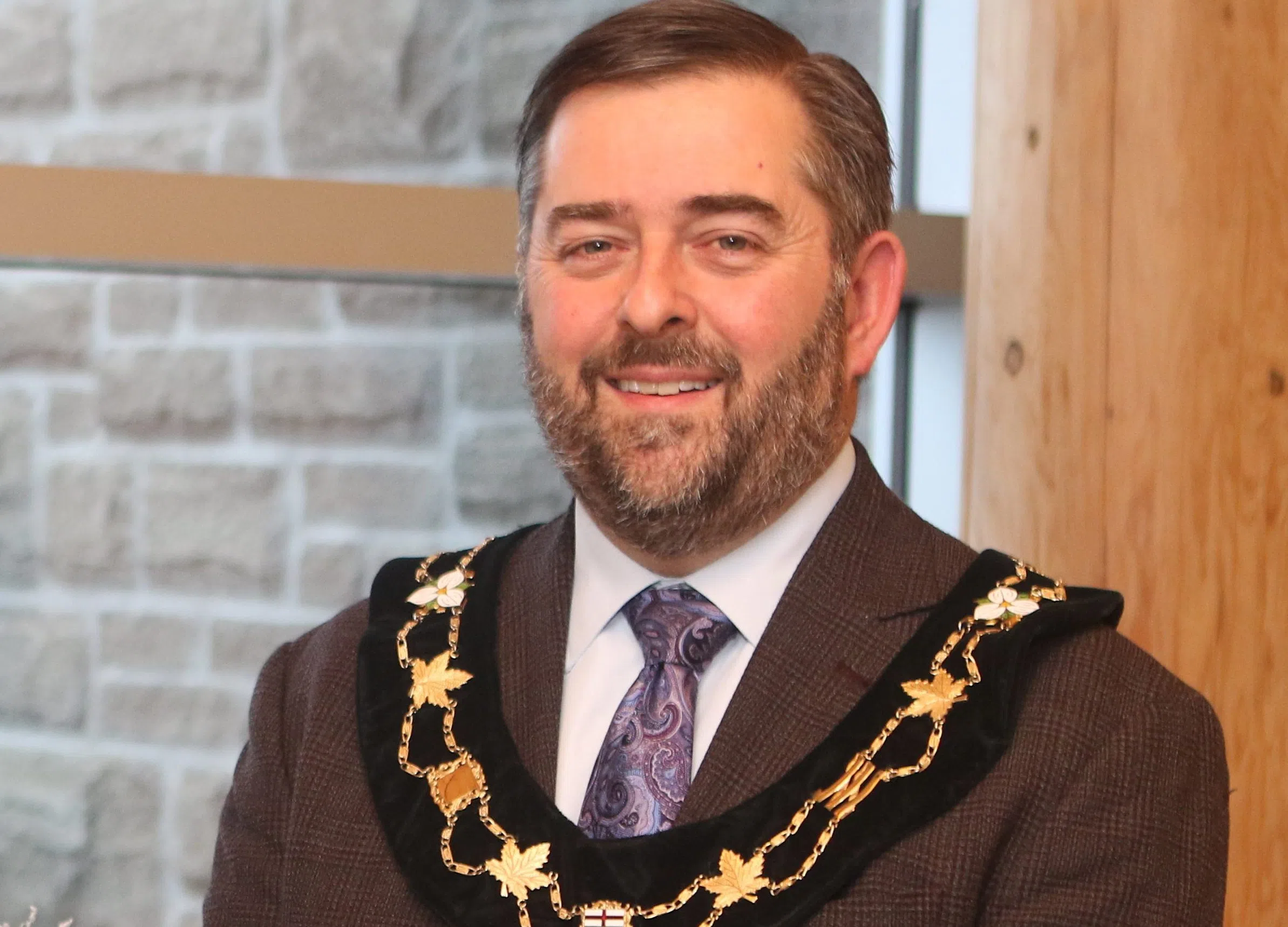
Brighton Mayor Brian Ostrander is among municipal leaders firing back in response to the province’s proposal to ban speed cameras and Premier Doug Ford’s “tax grab” comments.
On Thursday, Sept. 25, 2025, at a news conference in Vaughan, Ont., Ford confirmed the government’s plans to introduce legislation next month that would ban the use of municipal automated speed enforcement (ASE) cameras provincewide, “ensuring they are no longer used as a form of revenue.”
Ostrander argues the province’s move will hurt municipalities like Brighton – and ultimately translate to a hike in taxes.
“I think this is a poor decision on the part of the premier and on the part of the provincial government,” Ostrander told MBC following the news conference.
Echoing study findings, Ostrander also said speed cameras along Elizabeth Street in Brighton are working.
The implementation of ASE in Brighton has stirred significant conversation and online commentary on both sides in recent months, especially after tickets started arriving in the mail. But leaders like Ostrander have continued to defend council’s decision, saying no one pays if they don’t speed, and that the move was needed to slow people down in a community safety zone with two schools, a retirement home and Brighton’s largest public park along the stretch of road.
On Thursday, Ford doubled down on comments already made in recent weeks that hinted this was coming.
“At a time when governments at all levels should be doing everything they can to lower costs and make life more affordable, too many municipalities are using speed cameras as a cash grab,” said Ford, in a release Thursday. “Enough is enough.
“Instead of making life more expensive by sending speeding tickets to drivers weeks after the fact, we’re supporting road-safety measures that will prevent speeding in the first place, keep costs down and keep our streets safe.”
Minister of Transportation Prabmeet Sarkaria also echoed a similar message Thursday, saying cameras have become nothing more than a tool for raising revenue.
“Our government is focused on measures that truly protect the safety of all Ontarians, and we will continue working with municipalities to ensure Ontario maintains its position as one of the safest jurisdictions in North America,” said Sarkaria.
To help improve road safety, the province has said it will instead establish a new provincial fund to help municipalities implement “alternative safety measures,” citing proactive traffic-calming initiatives like speed bumps, roundabouts, raised crosswalks, curb extensions, public education, and “improved signage.”
“Regardless of the pot of money that the province comes up with, it will not replace the money that we’re going to be able to generate for traffic calming measures and pedestrian safety in the community,” said Ostrander, acknowledging there’s a revenue component and adding he’s never denied this.
“But it’s a revenue component that’s provided to us by people who violate the Highway Traffic Act,” he said, while challenging the premier’s comments.
Several bodies like the Association of Municipalities of Ontario have indicated support for speed cameras.
As previously reported, a CAA study also earlier indicated strong public support for ASE programs in high-risk areas, with data also showing cameras are altering drivers’ behaviours.
Nevertheless, public commentary locally – and regionally as rotating cameras have also been implemented in nearby Belleville – has been divisive at times.
Meanwhile, at the Northumberland County level just last week, there appeared to be an appetite among council to continue investigating potential rollout in 11 designated community safety zones. The direction at that meeting was for staff to return with another future report. Earlier staff assessments of the zones confirmed ongoing speeding concerns, “making them strong candidates for ASE.”
“We must control speeding, and the only way to do it, unfortunately, is to ‘ding’ people in the pocketbook and that changes behaviour. We know it. We’re watching it happen in Brighton in real time,” said Ostrander.
Ostrander went on to object to inferences that municipalities or councils are “greedy” or throwing monies into “some slush fund.”
In Brighton, he said council has already decided on prioritizing revenues to traffic calming measures and pedestrian safety and for other infrastructure to help build homes faster, which is desperately needed despite provincial investments.
While he continued to express gratitude for these investments – including monies for Brighton’s new wastewater treatment plant – he said aging sewers, roads and more remain, along with the expectation to build at a quicker rate. These revenues were slated to help with this and this year – unless cameras are removed – Ostrander said he was also looking at potentially freezing taxes and next year, possibly lowering them.
“I’m sorry folks, but what this premier just did was raise your property taxes and I’m not OK with that.”
According to Ostrander, data from implementation to a couple of weeks ago (roughly) – the latest figures he said he had – indicated revenue around the half-a-million-dollar mark, with more than $300,000 generated through fines for the municipalities and $100,000 through victim surcharges and licensing fees funneling to the province.
Ostrander noted when cameras were initially turned on (July 14), fines were around 300 daily. As of a couple weeks ago, numbers were reportedly down to about 73 tickets daily.
“Traffic cameras – speed cameras – work for public safety, period.”
According to provincial reports, since 2019, more than 700 municipal speed cameras have been installed in 40 municipalities, with more planned for installation in coming months.
“The government just threw out millions of dollars in revenue for a couple votes – and I don’t think that’s OK.”
Ostrander also shared this takeaway message, while calling on citizens to chime in.
“We’re willing to have the rules change. We’re willing to work with the province – more than willing to work with the province – on making sure that what we’re doing is fair and right, but taking this away – this traffic calming, this pedestrian safety tool away – one that also raises significant revenues for communities is just wrong.”
If the province’s legislation passes, it will prevent the use of speed cameras in Ontario immediately upon Royal Assent. The province has also said it will introduce requirements for municipalities with existing speed cameras in school zones to install large new signs to slow down drivers by mid-November, while permanent, large signs with flashing lights, would have to be put in place by September 2026.
As for alternative traffic-calming initiatives, the province stated municipalities would be “encouraged” to implement such measures.
(Written by: Sarah Hyatt)
